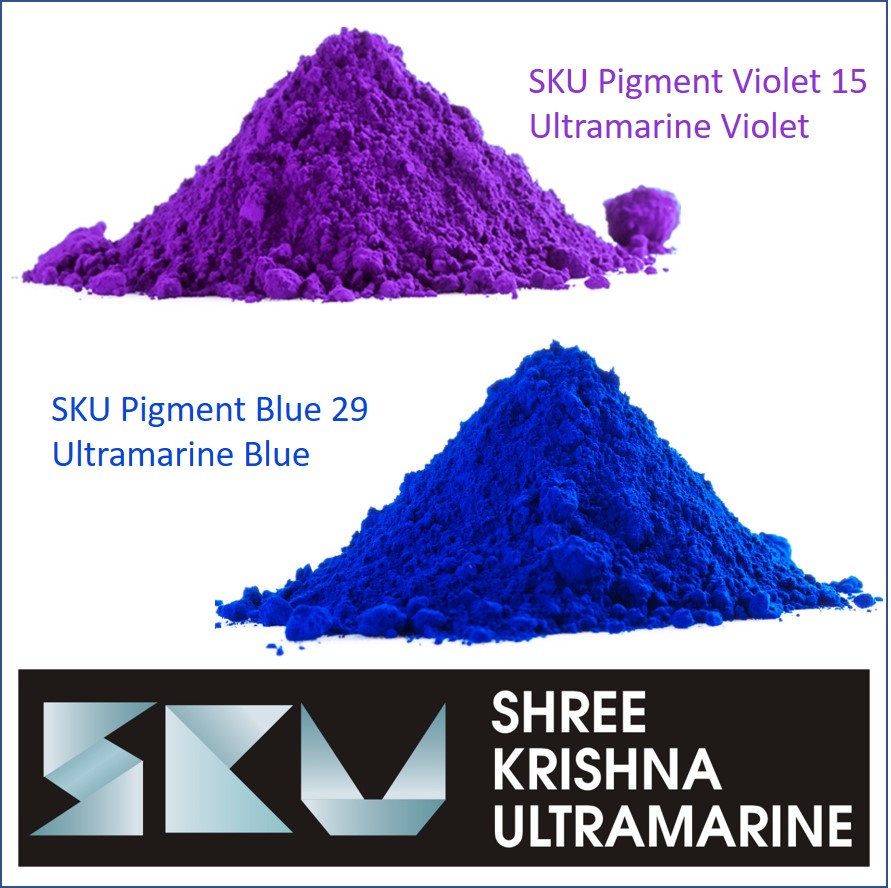Ultramarine Pigments: From Ancient Art to Modern Industry

For thousands of years, color has shaped art, design, and industry. Among the most iconic hues, Ultramarine is revered for its vivid tones. Today, companies like SKU Pigments supply high-quality Ultramarine pigments, including Ultramarine Blue, Ultramarine Violet, Pigment Blue 29, and Pigment Violet. From construction and cosmetics, Ultramarine has become the backbone of modern blue pigments.
The Journey of Ultramarine Through Time
The name Ultramarine comes from the Latin “ultra mare,” meaning “beyond the sea,” a reference to lapis lazuli originally imported from Afghanistan. For centuries, it was a rare treasure, used by Renaissance masters to paint sacred art. It symbolized wealth and divinity.
Modern chemistry made it possible to synthesize Ultramarine pigments, bringing the once-exclusive shade into everyday use. This breakthrough turned a exclusive pigment into a accessible solution for countless sectors.
The Versatility of Pigment Blue 29
Ultramarine Blue pigments—the synthetic form of Pigment Blue 29—are industry favorites. Known for their lasting vibrancy, they are safe, eco-friendly, and non-toxic. They are used in:
• Decorative finishes for long-lasting shades.
• Plastics and rubber, thanks to UV resistance.
• Inks and printing, where precision is vital.
• Cosmetics, given their non-toxic nature.
This balance of durability and eco-friendliness keeps Ultramarine Blue among the most demanded pigments.
Ultramarine Violet and Pigment Violet
Ultramarine Violet offers subtle elegance that appeal in decorative paints. Pigment Violet derived from Ultramarine is eco-safe, making it ideal for sensitive products.
Its gentle color enhances interior design, while ensuring longevity without chemical breakdown.
Industrial Uses of Ultramarine Blue
Pigment Blue—particularly Ultramarine Blue pigments—remains a trusted industrial choice. It offers weather resistance for:
• Vehicle coatings with resistance to fading.
• Packaging, ensuring stable shades.
• Decorative plasters, adding beauty and durability.
This cross-sector utility ensures Pigment Blue’s staying power.
The Benefits of Blue and Violet Pigments
• Non-Toxic & Safe: Ideal for cosmetics and toys.
• Heat & Light Resistant: Stable in outdoor use.
• Eco-Friendly: Green production methods.
• Cost-Effective: Budget-friendly industrial choice.
• Versatile: Across paints, plastics, printing, and construction.
Ultramarine in Modern Industries
1. Paints & Coatings: Durable architectural shades.
2. Ultramarine Plastics & Rubber: Safe for packaging.
3. Cosmetics: Skincare-safe pigments.
4. Construction: Flooring products.
5. Printing & Inks: Precision printing.
SKU Pigments: Global Ultramarine Experts
SKU Pigments leads the market, offering innovation in Ultramarine pigments. Their product portfolio includes:
• Pigment Blue 29 for industrial-scale use.
• Ultramarine Violet and Pigment Violet for luxury tones.
• Custom shades for niche industries.
Their reputation is built on consistent quality and eco-friendly production.
Conclusion
From lapis lazuli origins to the backbone of blue pigments, Ultramarine has remained relevant for centuries. Whether it’s the timeless vibrancy of Ultramarine Blue, the subtle elegance of Ultramarine Violet, or the stability of Pigment Blue 29, Ultramarine pigments remain indispensable.
With SKU Pigments as a global supplier, industries secure reliable pigment supply. As demand for eco-friendly pigments rises, Ultramarine will stay ahead in global markets.
Common Queries About Ultramarine
1. What is Ultramarine?
A blue/violet pigment with historic roots and modern industrial use.
2. What is Pigment Blue 29?
A widely used industrial pigment.
3. Where is Ultramarine Violet used?
In cosmetics and decorative paints.
4. Are Ultramarine pigments safe?
Trusted globally for safety.
5. Why choose SKU Pigments?
Trusted supplier worldwide.